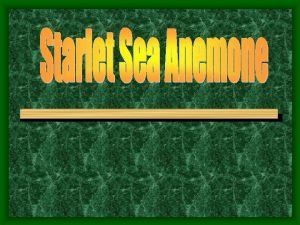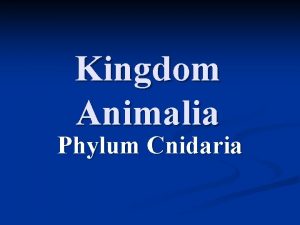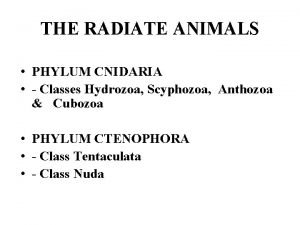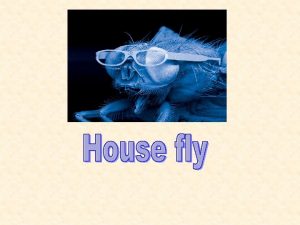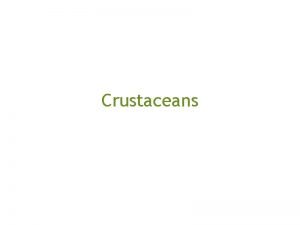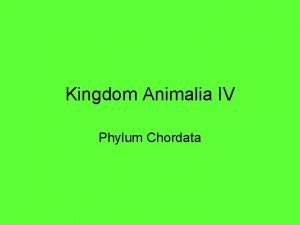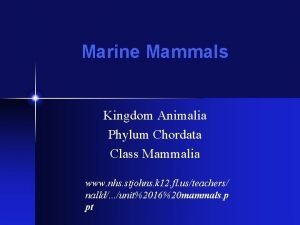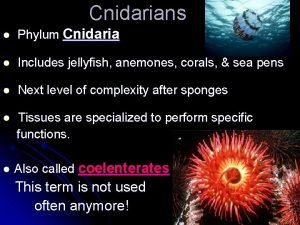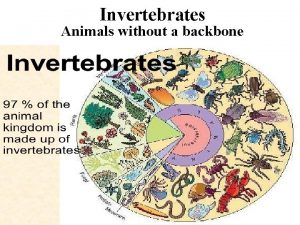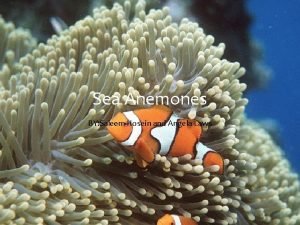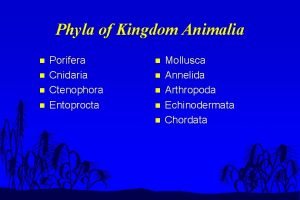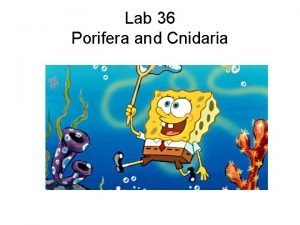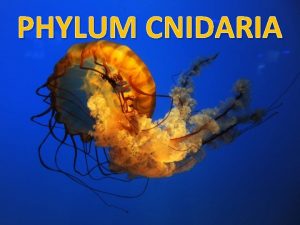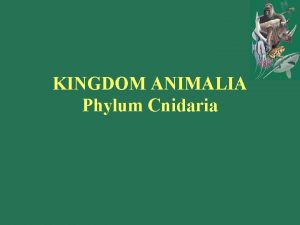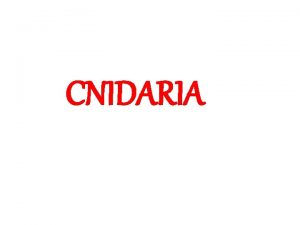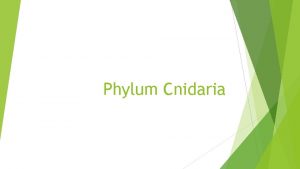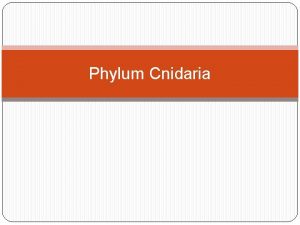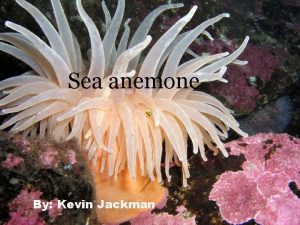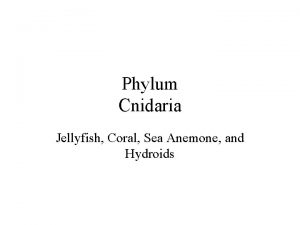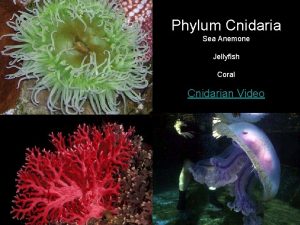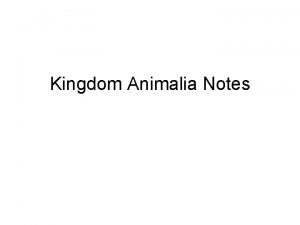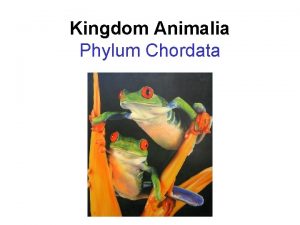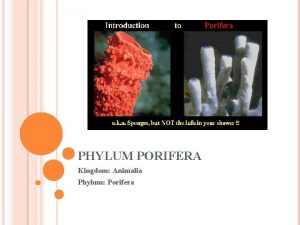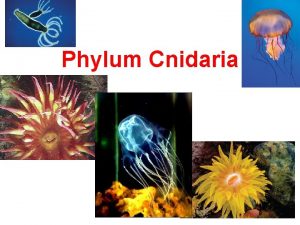Starlet sea anemone Overview Kingdom Animalia Phylum Cnidaria















- Slides: 15


Starlet sea anemone

Overview • Kingdom: Animalia • Phylum: Cnidaria • Class: Anthozoa • Order: Actiniaria • Suborder: Nyantheae • Family: Edwardsiidae • Genus: Nematostella • Species: Nematostella vectensis Like all members of the order Actiniaria, the starlet sea anemone is a solitary marine polyp

Origin Nematostella vectensis - the Starlet Sea Anemone in brackish Lagoons at Bembridge Harbour. This species was first described from the brackish lagoon of Bembridge Pond by T. A. Stephenson in 1935. Bembridge is therefore the species Type-locality and the specific name vectensis comes from the Roman name VECTIS for the Isle of Wight. It is nationally scarce, known only from a few brackish lagoons on the south coast of England. The length of the animal is probably not much more than 15 mm

Description The starlet sea anemone has a bulbous basal end a contracting column (usually less than two cm but no more than six cm) in order to burrow into the mud. At the top of the column is an oral disk containing the mouth surrounded by two rings of tentacles. The Tentacles are large in proportion to body, colorless and translucent with pale tips and with faint transverse bars and irregular flecks of white. The tentacles (9 - 18) are very strongly adhesive. Although the general color is a grayish white, recent food consumption may temporarily affect pigmentation.

By pushing its basal end into the mud and contracting its column, this anemone burrows into fine mud in order to secure itself against water currents.

Habitat This species of sea anemone lives in salt marshes along the coast of the United Kingdom, as well as the east and west coasts of the United States. Populations have also been located in Nova Scotia, Canada. Lives in isolated or semiisolated brackish lagoons at or above high water, typically in mud, muddy sand muddy shingle but is also found on vegetation.

Life cycle • Like all anemones, the starlet sea anemones can reproduce either sexually or asexually. • Asexual reproduction occurs by division of the body. In sexual reproduction, females release eggs which are fertilized by sperm released by males. It occurs during summer or fall. Fertilized eggs mature into larvae which metamorphose ( Think of caterpillars and butterflies) into anemones.

Nematostella development

Nv-muscle LIM

Nematostella development • In Nematostella, the sexes are separate and adults generate either eggs or sperm. • The cleavage program is chaotic with no two embryos developing identically.

• (A) A hollow blastula is formed • (B) Gastrulation proceeds by the invagination of the future oral end of the embryo. • (C) The planula `larva' is initially shaped like a teardrop and swims with its apical sensory tuft (at) directed forward. • (D) The coelenterons (gut cavity) has formed by the hollowing out of the solid planula. • (E) The polyp forms 7 days after fertilization. When it first settles onto the substrate, it has four tentacles and eight endodermal mesenteries. Endoderm lines the hollow tentacles

Starlet Sea Anemone’s Prey • The Starlet Sea • Starlet Sea Anemone feeds on insects larvae, worms, snails, crustaceans and anything that can feed their mouths. • They capture their preys with tentacles releases stinging cells to immobilize and kill the prey. • Anemones are uneatable by other organisms.

Food Habits • This species is remarkably unselective in its food consumption; it eats mainly copepods and midge larvae. The tentacles trap prey, then the cilia beat downward creating a water flow helping pull the food from the oral disk into the gastrovascular cavity for consumption.

Bibliography Ø http/www. nematostella. org Ø http: //www. marlin. ac. uk/ Øwww. animaldiversity. edu/ Ø Mr. Sullivan’s handout
 Sea anemone kingdom
Sea anemone kingdom Phylum cnidaria characteristics
Phylum cnidaria characteristics Cnidaria characteristics
Cnidaria characteristics Scyphozoa characteristics
Scyphozoa characteristics Hydra anemone
Hydra anemone Diptera
Diptera Kingdom animalia phylum arthropoda
Kingdom animalia phylum arthropoda What are chordata
What are chordata Seal phylum
Seal phylum Phylum chordata mammalia
Phylum chordata mammalia What are the two body forms of cnidarians
What are the two body forms of cnidarians Turbellaria food
Turbellaria food Saleem tentacles
Saleem tentacles Karakteristik animalia
Karakteristik animalia Porifera mouth
Porifera mouth Old kingdom middle kingdom new kingdom
Old kingdom middle kingdom new kingdom
